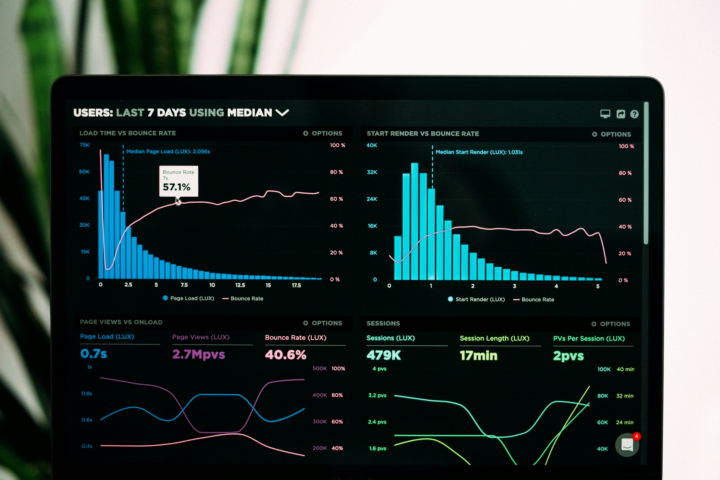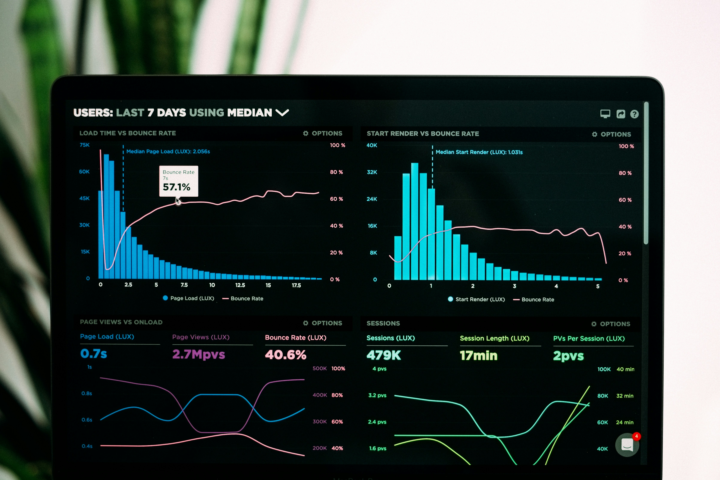Beyond the Shopping Cart: A Strategic Framework for Ecommerce Marketing
In the competitive landscape of digital retail, it’s easy to view ecommerce marketing as a checklist of channels to manage—a little SEO here, a dash of social media there. But this tactical approach often leads to a leaky, inefficient system. True growth comes from seeing ecommerce not as a series of independent activities, but as a single, interconnected ecosystem designed to attract, convert, and retain customers profitably. For marketing leaders, the goal is to build a resilient foundation where each channel works in concert with the others. This requires a strategic framework that moves beyond chasing individual metrics and focuses on optimizing the entire customer journey. By mastering this holistic approach, you can create a powerful engine for sustainable growth. The Foundation: Your Digital Headquarters Before you spend a single dollar on advertising, you must ensure your central hub—your ecommerce website—is engineered for performance. Every campaign, click, and customer interaction ultimately leads here, and its effectiveness determines the success of all other marketing efforts. A strong foundation rests on four pillars: • Seamless User Experience (UX): Your digital storefront must be as intuitive and enjoyable as possible. This means a mobile-first design, lightning-fast load times, and simple, clear navigation that makes finding and purchasing products effortless. • High-Converting Product Pages: Think of your product pages as your best digital salespeople. They need to be equipped with high-quality images, benefit-driven descriptions that solve a customer’s problem, and compelling social proof like reviews and ratings to build trust. • Robust Analytics: You cannot optimize what you don’t measure. Ensure that Google Analytics 4, advertising pixels, and conversion tracking are correctly implemented. This data is the lifeblood of your optimization efforts, providing clear insight into what’s working and what isn’t. • Intelligent Lead Capture: The reality is that most visitors won’t buy on their first visit. It is crucial to have a system for capturing email addresses through non-intrusive pop-ups, valuable content offers, or exclusive discounts. This allows you to continue the conversation and nurture browsers into buyers.
0
0

Social Media Now Outranks Search for SMB Traffic, New Survey Reveals
A fundamental shift is underway in how small and medium-sized businesses (SMBs) acquire customers online. For the first time, social media has surpassed organic search as the primary source of website traffic, according to a new survey from WordStream by LocaliQ. This finding, coupled with a growing frustration over AI’s impact on search visibility, signals a critical inflection point for marketing leaders and business owners. The data reveals that 64% of SMBs now list social media as a main traffic driver, edging out organic search at 52%. This trend is particularly pronounced among solopreneurs and micro-businesses, many of whom are finding that social platforms and online marketplaces provide sufficient lead flow to bypass the need for a traditional website altogether. This shift challenges the long-held belief that search is the undisputed king of inbound marketing and forces a re-evaluation of where to allocate precious marketing resources. The AI Disruption: Frustration and Opportunity The rise of AI-powered search is adding another layer of complexity. A significant 40% of SMBs report losing traffic due to Google’s recent updates and the integration of AI Overviews. While most (72%) still believe their SEO efforts are effective, there is a growing sense of unease as they see competitors appearing in AI-generated summaries where they do not. This has become the biggest frustration for small businesses, who feel they are losing control over their brand’s visibility at the most critical stage of the buyer’s journey. However, the survey also uncovers a silver lining. AI models often pull information from a wider range of sources than the top 10 traditional search results, creating a rare opportunity for smaller brands to gain visibility they would not normally earn. This has led to a surge in awareness and tracking, with 50% of all SMBs—and 70% of larger ones—now actively monitoring their AI referrals and mentions. The data makes it clear: AI-driven traffic is no longer a theoretical concept but a tangible and trackable channel that businesses can and should optimize for.
0
0

The 2026 SEO Budget: How to Invest in a World of AI-Powered Search
As marketing leaders enter the 2026 budgeting season, the ground beneath them has fundamentally shifted. The rapid evolution of AI-powered search has introduced a new layer of unpredictability, making traditional organic traffic more erratic and click-through rates harder to forecast. In this new landscape, relying solely on historical ranking data to justify SEO spend is no longer a viable strategy. CMOs are now under intense pressure to build resilient, future-proof marketing engines while still delivering and demonstrating measurable momentum. The challenge is not simply to ask for more money, but to restructure the entire approach to SEO investment. A successful 2026 budget must move beyond a monolithic allocation and adopt a more sophisticated, portfolio-based model. This framework should be built on three core principles: protecting the foundation, funding experimentation, and measuring what truly matters. The Three Pillars of a Modern SEO Budget A resilient SEO budget for the AI era is not a single line item. It is a strategic allocation across three distinct but interconnected pillars, each with a clear purpose. 1. Protect the Core: The first principle is to defend your baseline. This means allocating a protected, non-negotiable budget for the foundational elements of SEO: technical health, site performance, information architecture, and the ongoing maintenance of high-value content. These activities are the bedrock of your entire digital presence. Cutting them to fund speculative new initiatives is a critical error, as it introduces unnecessary risk and undermines the performance of every other marketing channel. 2. Ring-Fence the Future: The second pillar is a dedicated, experimental fund for AI discovery. As generative engines and AI Overviews continue to reshape how users find information, it is essential to have a separate budget for testing and learning. This “AI pot” should be used to explore answer-led content formats, develop a robust entity strategy, experiment with evolving schema patterns, and build new measurement frameworks to track visibility on AI surfaces. Without a dedicated fund, these crucial activities will either be neglected or forced to compete with essential operational work, stalling innovation.
0
0

Beyond Vanity Metrics: How to Define KPIs That Actually Drive Business Growth
In the world of digital marketing, we are surrounded by data. We can track clicks, impressions, followers, and a thousand other metrics. Yet, for all this information, many marketing leaders still struggle to answer a fundamental question: are our efforts actually working? The challenge lies not in a lack of data, but in a lack of clarity. Without a disciplined framework for defining Key Performance Indicators (KPIs), teams often find themselves chasing vanity metrics that have little to no connection to real business outcomes. The pressure to demonstrate ROI is greater than ever. As digital marketing budgets continue to grow, so do the expectations from CEOs and sales counterparts. They don't want to see a report on social media likes; they want to understand how marketing is contributing to pipeline, revenue, and customer retention. This is why the ability to define and track meaningful KPIs is no longer a tactical skill—it is a strategic imperative. The Strategy-First Principle: KPIs Don’t Exist in a Vacuum Too many marketing teams select their KPIs based on what is easy to measure or what looks impressive on a dashboard. This is a recipe for misalignment and wasted effort. KPIs are only valuable when they are directly tied to the overarching business strategy. They are the signposts that tell you whether you are on the right path to achieving your goals. Without that connection, you are simply collecting numbers. A strategy-first approach forces you to answer critical questions before you even think about metrics: • What is our primary business objective right now? Is it brand awareness, lead generation, customer retention, or something else? • Which channels are we prioritizing to achieve this objective? • How does our marketing activity directly support our sales and revenue targets? By clarifying these points, you can immediately begin to separate meaningful indicators from distracting noise. For example, if your primary goal is to generate qualified leads for your sales team, then metrics like website traffic or social media impressions are secondary. The KPIs that truly matter are those that measure the flow of leads through the funnel, such as Marketing Qualified Leads (MQLs), Sales Accepted Leads (SALs), and the cost per lead.
0
0

The SEO Tradeoff: Navigating the Triangle of Fast, Cheap, and Good
In the world of digital marketing, the "fast, cheap, or good—pick two" principle is a well-known project management concept. This idea, often visualized as a triangle with sides representing time, cost, and quality, suggests that you can only optimize for two of these three elements. While this framework provides a simple way to understand project tradeoffs, it requires a more nuanced application when it comes to search engine optimization. In SEO, these tradeoffs are not just about setting expectations; they are about making strategic decisions that have long-term consequences. A misstep in balancing these three elements can lead to problems that are far more costly to fix down the road. Understanding how time, cost, and quality interact is therefore essential for any successful SEO initiative. The Three Pillars of SEO Project Management Time in SEO is a measure of patience. While moving faster than the competition is always an advantage, SEO is fundamentally a long-term investment. It can take six months to a year to see significant results, and in highly competitive industries, achieving top rankings for valuable keywords can be a multi-year endeavor. Research has shown that the vast majority of pages ranking in the top 10 are over a year old, with the average top-ranking page being several years old. However, being nimble—making smart decisions and implementing them quickly—can allow a smaller, more agile team to outperform larger, slower-moving competitors. Cost is a direct reflection of the expertise and resources dedicated to a project. While the allure of inexpensive SEO services is strong, the reality is that high-quality work from experienced professionals comes at a price. Opting for a low-cost provider often means you are purchasing an illusion of progress, with tactics that may provide a short-term boost but ultimately lead to penalties and a loss of visibility. In the end, the cost of recovering from poor SEO work far exceeds the initial savings.
0
0

1-30 of 49

skool.com/seo-success-academy
Welcome to SEO Success Academy – the ultimate destination for business owners, digital marketers and agencies to master the art and science of SEO.
Powered by


